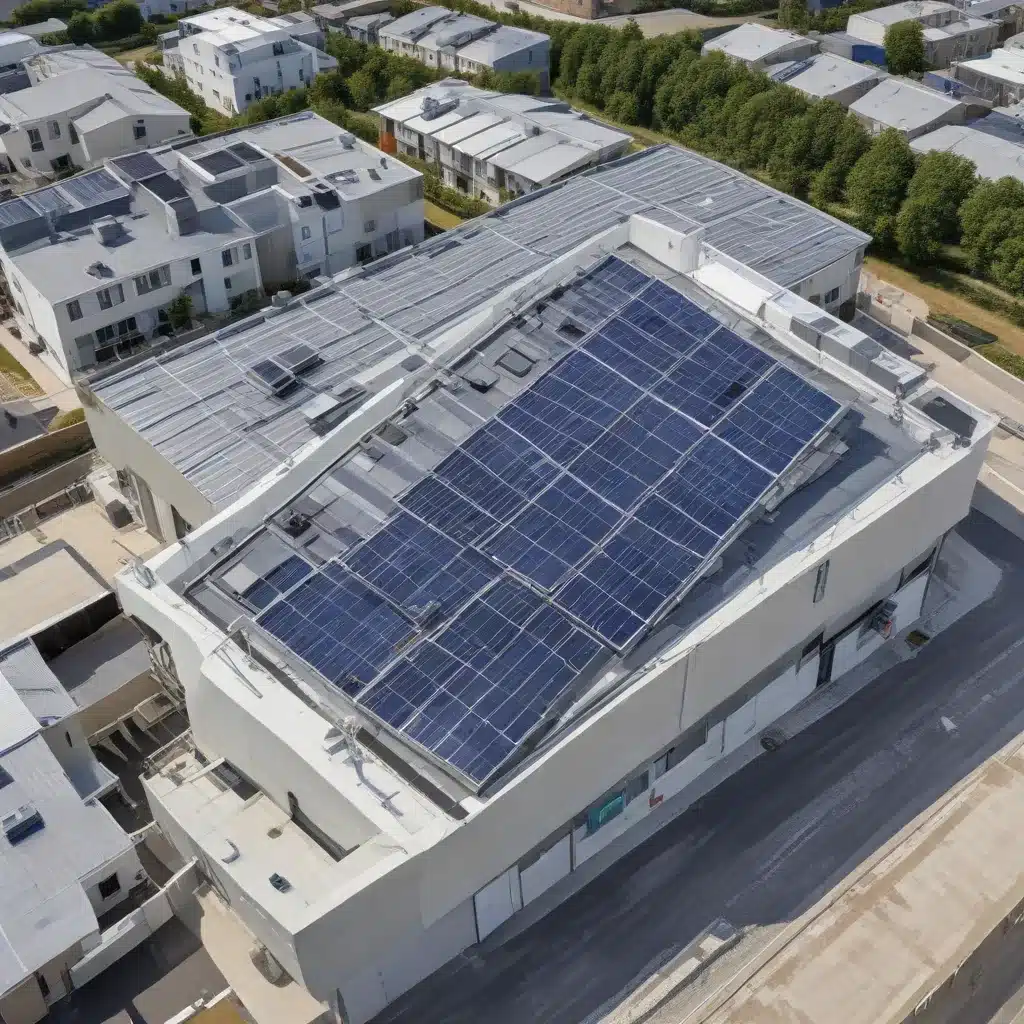
The Transformative Power of Sector Coupling
As the world grapples with the pressing need to transition away from fossil fuels and address the growing climate crisis, integrating renewable energy sources into our existing energy systems has become more critical than ever. This is where the concept of “sector coupling” presents a unique opportunity, paving the way for a more sustainable, efficient, and resilient energy future.
Sector coupling is an innovative approach that involves the integration of traditionally separate energy sectors, such as power, heating, transport, and industry. By dismantling these silos and fostering collaboration across sectors, sector coupling enables the more efficient utilization of renewable energy sources, supporting the development of a low-carbon economy.
One of the key aspects of sector coupling is its ability to optimize the use of renewable energy. For example, excess electricity generated by offshore wind farms can be stored in batteries or converted into hydrogen, making it available when demand is high or when renewable production is low. Similarly, the electrification of buildings and industries, another pillar of sector coupling, allows for the use of renewable electricity to power heat pumps and industrial processes, further reducing reliance on fossil fuels.
Moreover, by creating interconnected systems, sector coupling offers a buffer against disruptions. If one sector experiences a supply issue, energy can be diverted from another sector, ensuring stability and continuity. This enhanced flexibility ensures that renewable energy is used more effectively, contributing to a more robust and sustainable energy infrastructure.
Harnessing the Potential of Roof-Integrated Renewable Energy Systems
One area where sector coupling can have a significant impact is in the integration of renewable energy systems into buildings, particularly on rooftops. The European Union’s recent adoption of the EU Solar Standard within the European Performance of Buildings Directive, mandating solar installations on buildings across the European Union, highlights the growing importance of making buildings more energy-efficient and sustainable.
For businesses, especially those with large, flat roofs such as logistics centers, warehouses, and industrial buildings, installing solar panels is an excellent way to utilize otherwise underused roof space. Solar panels transform rooftops into productive assets, generating clean energy and delivering significant economic benefits.
Maximizing the Efficiency of Solar Panel Systems
When integrating solar panels with buildings, it is crucial to ensure that the roof is well-prepared to accommodate them without compromising structural integrity or waterproofing. Protan, a leading provider of roofing solutions, offers innovative products that address this challenge.
Protan’s waterproofing membranes, available in light colors such as PVC or TPO, are designed to reflect solar radiation, preventing overheating and maximizing the efficiency of the solar panels. These membranes not only protect the roof but also contribute to the overall performance of the solar system.
The Economic and Environmental Benefits of Solar Roofs
By installing solar panels, businesses can drastically reduce their energy costs. Generating your own electricity mitigates reliance on the grid and provides a buffer against rising energy prices. Additionally, various incentives, tax credits, and rebates are available to further enhance the economic benefits of solar installations.
Solar energy is a clean, renewable resource that reduces greenhouse gas emissions. Adopting solar technology demonstrates a commitment to sustainability, improving your company’s environmental credentials and aligning with corporate social responsibility goals. Properties equipped with solar panels often see an increase in market value due to the long-term energy savings and sustainability benefits.
Navigating the Regulatory Landscape
When it comes to the installation and maintenance of solar panels on roofs, it is essential to navigate the regulatory landscape carefully. Depending on the location, there may be specific requirements and guidelines that must be followed.
For new buildings, the various parties involved, such as project owners, responsible contractors, and suppliers, must agree on the content of the delivery and follow the regulations for the installation. This may include considerations such as the quality of the roof covering, the compressive strength of the insulation, and fire requirements.
In the case of retrofitting solar panels on existing buildings, the project may require an application, as it is considered a facade change. Additionally, an advisor for construction safety must evaluate the project, considering factors like fastening, load calculation, and the supporting structure.
Expert Installation and Maintenance
Partnering with experienced professionals is crucial for the successful implementation and long-term performance of roof-integrated renewable energy systems. Protan’s Contracting services ensure that your solar panel system is installed safely, efficiently, and tailored to your building’s specific needs.
Protan’s team handles everything from initial assessments to obtaining necessary permits and installing the system. Solar panel systems require minimal maintenance, typically involving regular cleaning and periodic inspections. Protan’s durable roofing membranes reduce maintenance needs and extend the lifespan of both the roof and the solar panels, ensuring that your investment remains protected and functional for many years.
Embracing the Future of Sustainable Energy
Investing in roof-integrated renewable energy systems is a strategic decision for businesses aiming to optimize their roof space and achieve significant economic and environmental benefits. By transforming your roof into a waterproof, functional, energy-generating asset, you can futureproof your long-term savings, increase property value, and demonstrate a strong commitment to environmental responsibility.
As the world continues its transition towards a low-carbon future, the integration of renewable energy systems with buildings, particularly through the lens of sector coupling, represents a vital step in unlocking the full potential of sustainable energy. By embracing this transformative approach, businesses can not only reduce their environmental impact but also position themselves for long-term success in an increasingly green economy.
To learn more about how Roofers in Northampton can help you maximize the value of your roof with solar panels and other renewable energy solutions, visit our website or contact us today.

